Ping S55 Irons Review
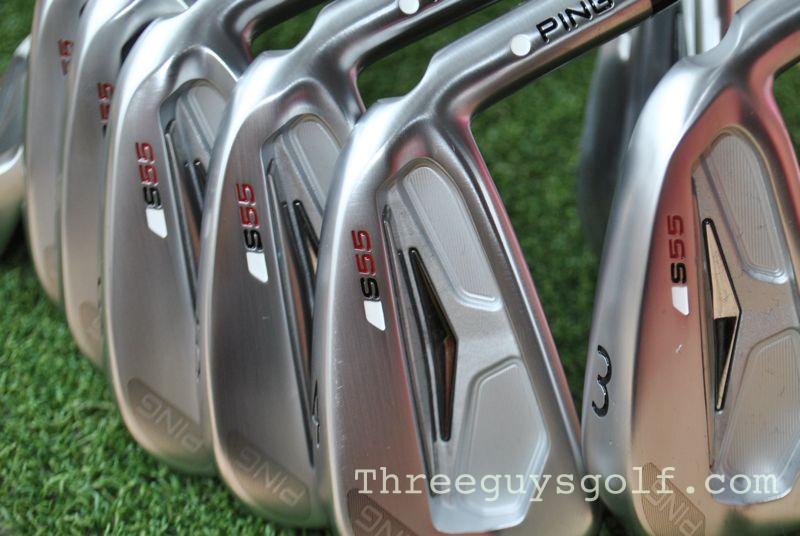
Karsten Solheim, the founder of Ping, came to the game of golf later in life but left his mark as a recognized product innovator. In the early 60’s Solheim began tinkering with equipment and was often found peddling is homemade putters around the practice greens on the PGA tour, and yes it was because of the metal he used which created the now iconic ‘ping sound’ that gave birth to the name. The metal of the putter head may have sounded a bit funny and looked dull compared to the shiny offerings of other companies, but when Pros started to win on tour with his putter the Ping reputation grew to what is now a global brand.
My introduction to Ping irons came in the form of the classic beryllium-copper Eye2. It was with those clubs that I learned to play golf and for many years they remained in my bag. To this day, years apart from their introduction, the perimeter weighting, square grooves and softer metal are all testaments to the innovation, risk-taking and technological improvements that Ping has brought to the table.
Primarily known for their game improvement irons, Ping has launched the innovative new S55 irons, which are targeted to low handicap players. On tour, guys like Bubba Watson and Hunter Mahan have added these clubs to their bag. In fact Bubba made the change mid-season during the 2013 FedEx Cup after years with the S59’s. Suffice it to say that I was excited to see what new stuff Ping had put under the hood.
As a reference point, I have been playing the ‘09 Callaway X-forged irons for several years and have enjoyed the challenges of playing a forged club with its smaller profile and head size but with the forgiveness of a cavity back. Given that I saw similar features in the Ping S55 and read about their added forgiveness, I felt confident they would be a good match for my game.
The first thing Ping did was send me through their online fitting program. It’s available from when you first log onto their website at Ping.com and enter the dropdown menu telling them what continent you’re from. You then click on the blue “Get Fit with nFlight web” tab, and after answering a few questions about your game and giving them some measurements like height, height of wrists from the floor, and hand length, they provide you with a club, shaft and grip recommendation. For experimental purposes, I spent more than an hour making small changes to my answers in order to see how much difference it made in Ping’s recommendations. Interestingly, the differences in what Ping recommended were fairly significant with only small changes to my reported stats, like 7-iron distances for example. Also, since they spit out a specific ‘solution’ for you, it makes sense to also familiarize yourself with the whole product line so that you will like the look and feel of what they suggest.
My recommendation was for the S55 irons, white dot (three degrees upright) with .25’’ added to the shaft length and Ping z-z65 stiff shafts, and grip color-code white. While I think the online Ping fitting process it very solid, I would also recommend visiting a shop that sells Ping clubs via one of their club-fitting booths, so you could demo some of the subtle differences between shafts, lies (color dots) and lengths. For example, fellow blogger Mathew who reviewed the Ping G25 was able to determine that he wanted a different dot color than the website recommended after trying them in person.
When I first pulled my set of Ping S55 from the box, I was struck with how good-looking the clubs are to my eye as they carry a classic blade shape and shiny finish. It guess it is understandable for veteran golfers, who are used to the traditional dull Ping finish and over-sized shape, to actually question “Is this a Ping?” when confronted with the new S55’s.
Since I recently had the opportunity to review a new Miura muscle-back blade, the MB-001 6-iron, I wanted to see how it and my Callaway compared to the new set of Pings. So with those two irons and the S55’s in hand I headed to the range. As I warmed up with all of the S55 irons, my first impression was how solid they felt and how easy they were to hit high and soft. I also noticed a slight click that was sharper than the sound of hitting the other forged clubs. Some reviewers have made a lot of the sound difference between this click, and the thud of a forged club. Although it was noticeable to me it was not overbearing but rather it gave me the sense that I was hitting a slightly harder face with the ball jumping off of the club and into the air. So while there is still the Ping click, they have added a CTP, or custom-tuning port which is part of the mechanics you see on the back of the club. Basically this adds an air pocket behind the club face which is then filled with their thermoplastic elastomer. Note that the Ping S55 is made with 17-4 steel, which is harder and more durable than forged steel, so this ‘cushioning’ created by the CTP acts to reduce sound and vibration when the ball is struck.
As I worked from PW to 3-iron, all of the clubs felt very consistent through the set in terms of how solid they felt – even on slight miss-hits. Each club was easy to hit with a beautiful, high trajectory. The three 6-irons I was testing seemed about the same in terms of distance and trajectory on well-struck shots, but the Ping was noticeably more forgiving on off-center shots. The feedback was still coming off the face as far as mis-hits, but I wasn’t penalized to the same degree as with the other two irons. These irons are designed with their MOI to be able to get a ball into the air quickly and to feel very solid through the ball. The result is that I have been able to hit high soft shots, even with the 4 and 3-iron, much easier than other blades I have hit.
As I moved to the course after a few more range sessions, I was able to forget about having new clubs, and work on knocking off some winter rust. I found pulling the right club for the yardage was easy and appreciated the club’s top-line visuals which are classic and familiar to other forged clubs. Unlike many of the other Ping clubs, the size of the S55 is similar to other blades with all of the benefits of a blade in terms of workability, ability to knife through deep rough, and tendency to keep from getting hung up in the turf through impact.
As I tested the clubs further, I was very curious as to how the Ping PW and 9-iron worked in my short game. I’m a huge fan of the SCOR wedges on multiple levels and I was pleasantly surprised as to how the Ping clubs compared to them around the green. While the sound of the club was still a bit ‘clickier’ than the SCOR wedge, the performance was very similar. One big difference in the Ping S55 compared to most blades is the sole which is more rounded, both from leading edge to the back, and from heel to toe. The roundedness from heel to toe opens up the variety of shots you can hit off of different lies and this roundedness is positioned in about the same place as the bounce ground into SCOR wedges. What I found was that chipping with 7-iron through PW was a breeze with the Ping irons. Additionally, this same forgiving technology is built into the sole of all their clubs, right through to the 3-iron.
Ping recommends the S55 clubs for low single-digit handicappers and retail for around $1000 for 3-PW with steel shafts. If you are looking for something that sets up and feels like a blade but want a touch more forgiveness than a true blade then I recommend you give these irons a very serious look. Ping’s club fitting is clearly one of the best in the business, and their commitment to innovation and excellence that stretches all the way back to their founder Karsten Solheim, is very visibly demonstrated in these new S55 irons.
You can visit the Ping website to learn more about the S55 irons.




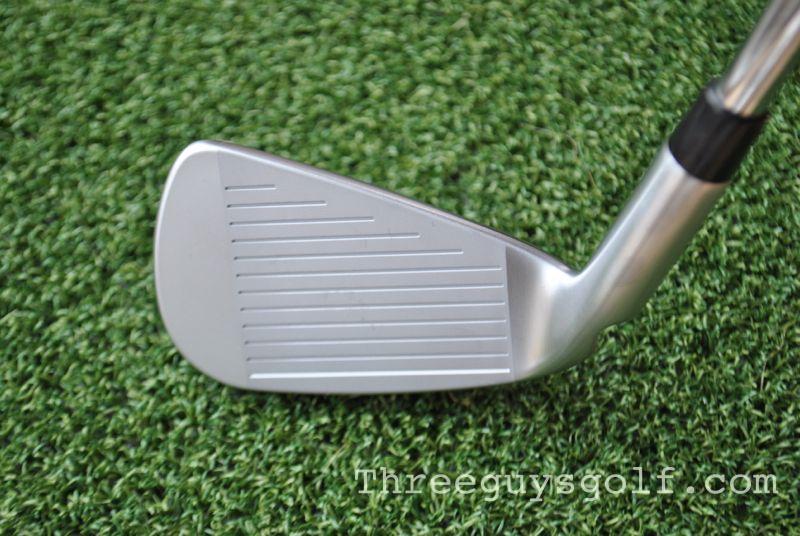

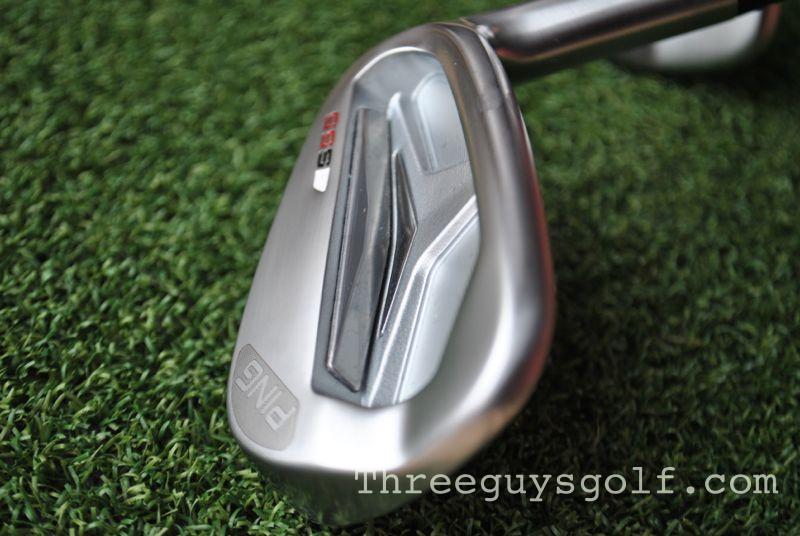


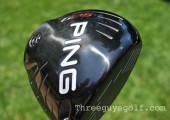


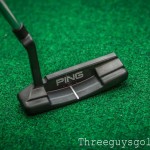

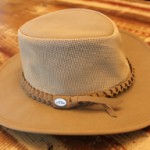


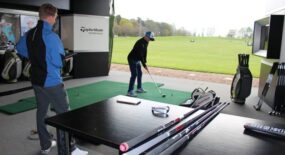
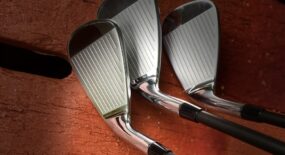

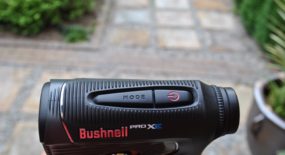







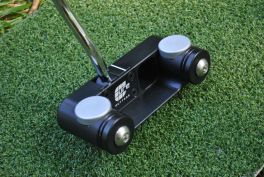
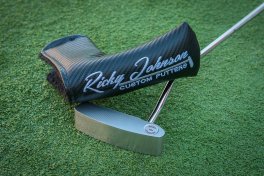
Hello Wade,
Visited your web site for the first time and read your report on the Ping S55’s,and very impressed with the no nonsense and impartial views so will definitely visit your site more often.
I am ordering a full set after testing and was also impressed with the CFS Ping shafts, what’s your view on them?
Regards, Alan van de Sande.
Hi Alan, Thank you for taking the time to comment on the blog. We appreciate your feedback! I don’t have extensive experience with changing shafts all the time. My main experience is with Memphis 10s and Project X shafts in my previous Callaway irons. I did play the stock shafts in my Ping Eye2 clubs, but the main reason I went with the Z65 shafts for this review was that Ping recommended them to me when I went through their online fitting. What I have found is that, as I have played with them, the more comfortable I am, and the more I like them. They do feel like a good fit for my swing speed, and for what I like to do with an iron shot. I am comfortable swinging the 3-iron through the wedge, and it’s been a while since I have bothered to hit a 3-iron, even off the tee. I do hope that you enjoy your set!